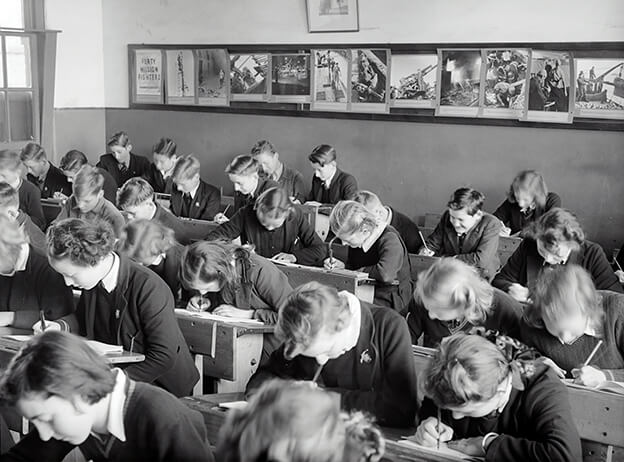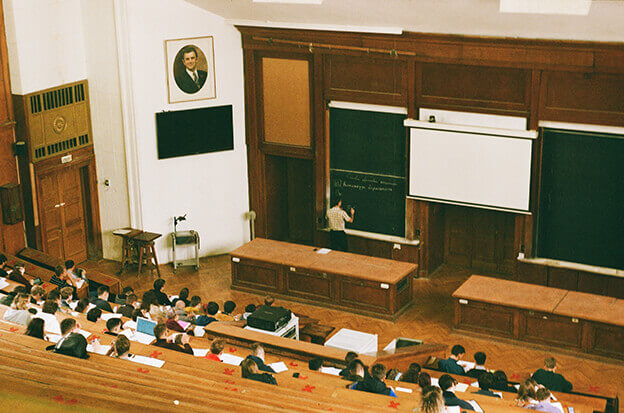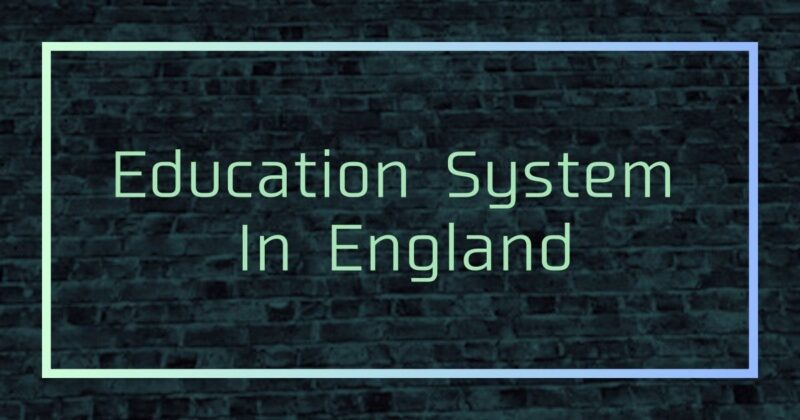Hi. It’s konkaz (@konkazuk) here.
This article seeks to provide a comprehensive overview of the ‘British education system,’ a topic I’ve intended to understand better for a long time but have continually postponed.
So, it’s time to give it a proper summary.
In Japan, the compulsory education system is based on the American system, with six years of elementary school and three years of junior high school, totaling nine years. In the UK, however, it’s a bit longer.
Anyway, let’s have a look!
The overall structure including compulsory education

To begin with, let me explain that the British education system is divided into four stages: primary education, secondary education, further education, and higher education, as shown in the table below.
| Age 5~ 11 | Primary Education | Year 1 ~ Year 6 (6 years) |
| Age 11 ~ 16 | Secondary Education | Year 7 ~ Year 11 (5 years) |
| Age 16~ 18 | Further Education | Year 12 & Year 13 (2 years) |
| Age 18~ 21/22 (28 at most) | Higher Education | Undergraduate program (3 ~ 4 years) Master’s degree program (1 year) Doctoral degree program (1 ~ 6 years) |
*Most people typically finish their undergraduate studies and start working, so they usually complete Higher Education around the age of 21 or 22.
Among these, what is known as compulsory education comprises the first two sections in the table: Primary Education and Secondary Education, totaling 11 years.
Therefore, from this point onwards, we’ll go through it step by step starting from when the child is born.
Nursery

Following the birth of a child, the first institution they will attend is a “nursery“.
It’s equivalent to what we call a ‘hoikuen’ (daycare center) in Japan, but it’s not mandatory.
Basically, children spend two years here when they’re around 2-3 years old or 3-4 years old. However, quite a few nurseries also accept children as young as 1 year old or even a few months old.
For popular nurseries, you might have to wait “over a year” to get a spot. It’s recommended to visit early (some say as soon as you find out you’re pregnant!) and get on the waiting list.
Moreover, if you are interested in finding out which nurseries are highly rated, you can refer to the website of
Ofsted (Office for Standards in Education),
the regulatory body for education in the UK.
If you go to their website and enter your area’s postcode, you can access a list and rankings of nurseries in your area. This can serve as a useful reference.
However, the best information usually comes from interacting with mom friends, so make sure to network regularly.

Next, before your child enters compulsory education, there are two main forms of financial support from the government that are widely recognized, as listed below.
⚫Child Benefit
Families with children under 16 can receive benefits for up to two children, as long as the parents do not exceed the income tax limit. (No support is available for the third child and beyond.)
⚫15 hours Free Child Care
For children aged 3 to 4, all families are entitled to 15 hours of free childcare per week over 38 weeks a year. If both parents are working and meet the minimum income requirements, they can receive 30 hours of free childcare per week over the same period.
To support families raising children while working, there are Working Tax Credits and Child Tax Credits available to parents. These credits are now incorporated into Universal Credit.
Reception

Following nursery, the next stage for children is usually “Reception“, a year that most primary schools offer.
In other words, the period before children start YEAR 1, which is the beginning of compulsory education (equivalent to first grade in Japan).
It’s a year of preparation before their 5th birthday, specifically those who are 4 years old by September.
Practically speaking, it’s similar to enrolling in the school they will attend, so it’s a thrilling occasion for both the parents and the children.
Primary school

Then, once the child turns 5 by September, they move on to “Primary School,” which is equivalent to “elementary school” in Japan.
From this point, “compulsory education” starts.
The learning period, as mentioned at the beginning, is from Year 1 to Year 6, covering a span of six years.
When entering primary school, you start hearing the term ‘Key Stage‘. It refers to the four stages of compulsory education defined by the National Curriculum in the UK.

The education system is also divided into four sections, so it can be confusing at first.
| Key Stage 1 | age 5 – 7 [Year 1 ~ Year 2] |
| Key Stage 2 | age 7 – 11 [Year 3 ~ Year 6] |
| Key Stage 3 | age 11 – 14 [Year 7 ~ Year 9] |
| Key Stage 4 | age 14 – 16 [Year 10 ~ Year 11] |
Each stage has specific subjects and content, and students take the SATs (Standard Assessment Tests) at the end of Key Stage 1 (Year 2 / age 7) and Key Stage 2(Year 6 / age 11).
Since these tests aim to measure the school’s collective academic ability, you don’t have to be overly concerned about your individual results.
And just to jump ahead a bit, in Key Stage 4 (Year 11 / age 16), students will take the GCSE (General Certificate of Secondary Education) exams.
The outcomes of these exams are crucial because they are used as one of the criteria for university admissions or job applications.
Regarding compulsory education, there is also the option of homeschooling (which does not necessarily have to follow the National Curriculum), and there are parents who actually choose this method.
Furthermore, regarding the period of compulsory education in the UK, it originally spanned 11 years from ages 5 to 16 across all regions (England, Wales, Northern Ireland, Scotland),
but since 2015, it has been extended to 13 years, from ages 5 to 18, in England alone.
The reason for this is said to be to prevent the increase of young people, referred to as ‘NEETs‘ (Not in Employment, Education, or Training), who do not work, remain dependent on their parents as adults, and gain weight while spending too much time in front of computers.
After completing Secondary Education (where compulsory education ends outside of England)…
⚫ If you wish to go to university, you proceed to a course of study called Sixth Form (usually attached to the secondary school you are attending, but if not available, you study at a Sixth Form College).
⚫ Alternatively, if you wish to specialise in fields such as agriculture, art, or design, you can opt to study at a Further Education College or a Tertiary College to earn high-level vocational qualifications.
⚫ Further more, another choice is apprenticeships, where you can learn and gain practical experience at the same time.
Secondary school

While the previous explanation of ‘Key Stages’ already covered some aspects of secondary school, let’s now examine it in more depth.
Choosing a Secondary School

After studying for six years in primary school, students move on to secondary school. About a month after the start of the final year in primary school, ‘Year 6,’ the school will request the submission of the ‘secondary school transfer application form‘.
Although it is referred to as filling out a form, the entire process is done online. You need to list the schools you want your child to attend, from first choice to sixth choice, and submit it before the deadline.
Therefore, you will need to carry out thorough research on the secondary schools in your area.
Furthermore, around this time, schools host open days, providing explanations of their policies and offering tours. If you want to see the school with your own eyes, make sure to check these out.
By the way, children born into families with an average level of income typically attend a Comprehensive School (commonly referred to as a ‘State school’ with no entrance exam), but what is important here is…
State schools tend to admit applicants based on their proximity to the school, a fact known as the catchment area.
It is said that particularly dedicated parents move into the catchment area of the school they want their child to attend, considering their child’s future.
Therefore, since secondary school is where the GCSE exams take place and it is crucial for determining a child’s future direction, I recommend researching catchment areas and other factors early on.
(By the way, you will find out which school your child has been selected for around March.)
GCSE (General Certificate of Secondary Education)

In Year 10 (ages 14-15), the fourth year of secondary school, students start coursework as part of the curriculum for the GCSE exams, which are two years away. But even in Year 9, they begin narrowing down their GCSE subjects.
While subjects are elective, the following three are generally mandatory.
🔹 English language/literature
🔹 Mathematics
🔹 *Science
*Regarding Science, there are two options: studying and taking tests in the three subjects—Biology, Chemistry, and Physics—individually (each counting as one GCSE grade), or taking a combined course that covers all three subjects, called ‘Combined Science,’ which counts for two GCSE grades.
Next, the elective subjects.
While there are slight differences between schools, the subjects are grouped into categories, and students must select a balanced number from each.
⚫ Humanities
History
Geography
Sociology
Philosophy
Religious Studies
⚫ Languages
Spanish
French
German
Modern Languages(Japanese is included!)
⚫ Arts and Design
Textile Design
Graphic Design
Three Dimensional Design
⚫ Design and Technology
Food and Technology
Product Design
Textile Technology
⚫ Performing Arts
Drama
Music
Dance
⚫Physical Education and Health Education
Physical Education
Combining the compulsory subjects, students have to choose around ten subjects.
At the age of 13 or 14, having to pick subjects with their future university major in mind is honestly quite tough, I believe…
Grades are assessed through final exams and coursework projects completed during classes. Recently, the importance of coursework has been diminishing, and more emphasis is being placed on essay-style answers that test writing skills.
Regarding grades, since 2017, the old system ranging from A* to G has been replaced by a new system using numbers from 9 to 1.
(Previously, A* and A correspond to the current 9 to 7, while B and C correspond to 6 to 4).
For more details, 👉 click here.

For those moving on to Sixth Form, having at least 6 subjects with grades 6 or higher is seen as a safe zone??? Furthermore, achieving grades 9 or 8 in several subjects can impact your university options. How intimidating…
SIXTH FORM

After completing secondary school, students aiming for university usually move on to a 2-year educational program known as ‘Sixth Form‘, commonly linked with secondary schools.
Sixth Form, alternatively referred to as ‘Key Stage 5‘, is typically called Lower Sixth (L6) in the first year and Upper Sixth (U6) in the second year.
In the past, students took the AS (Advanced Subsidiary Level) exam at the end of Year 12 and the A Level (Advanced Level General Certificate of Education) exam in Year 13.
But since 2018, when the UK Department for Education declared that AS results would be entirely separate from A Levels, the AS exam is no longer required. Now, students only need to take the A Level exam at the end of Year 13.
Students should choose subjects that match the university courses they want to pursue in the future, but it’s best to pick the ones they enjoy the most, considering their GCSE results.
Most students are said to choose four subjects in the first year and then narrow it down to three subjects in the second year (dropping one subject) to take the exams.
Students are graded A*, A, B, C, D, and E, and admission to their preferred university is granted if they achieve the required grades.
Therefore…,
there are no individual entrance exams like in Japan.
University tuition fees are currently said to be between £10,000 and £38,000 per year (approximately ¥2,000,000 to ¥7,500,000, with the current exchange rate of about £1 = ¥200).
Most students borrow money from the government to cover tuition and living costs, and they must repay it after graduating, once they earn a certain amount.
You graduate from university to boost your earnings in the job market, but instead, you find yourself drowning in debt? What kind of system is that…?!

Thanks everyone for reading until the end.
That’s it for this article.
I hope my summary was helpful to you in some way.
konkaz
*You can read this blog post in Japanese from the link below.
👉 【イギリスの教育制度】の特徴を簡単にまとめてみました。
*Maybe you are interested in reading…
👉 【UK Political System】 explained!!!

